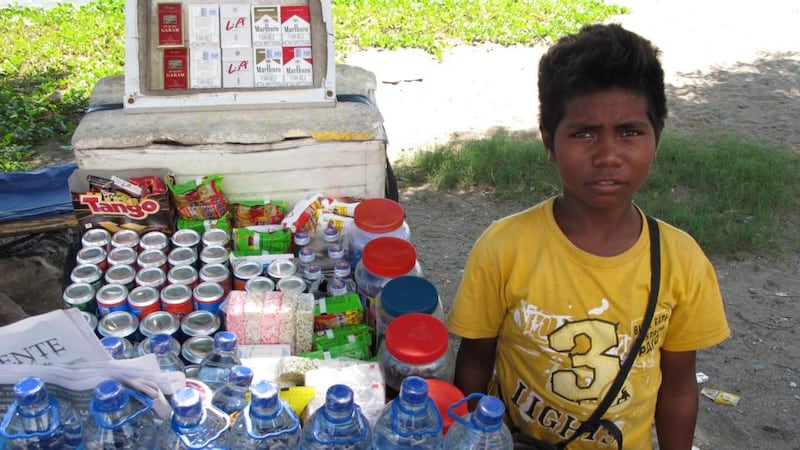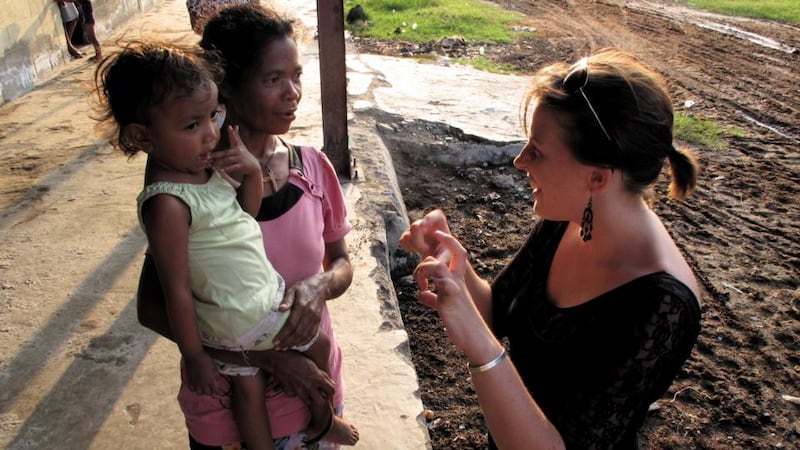"Hello, Missus. Where you going?" This is Okto's daily greeting, delivered with an impish grin from across the street where he mans his kiosk. I cross the road to buy call credit, lured by his charm. Of all the stallholders in Dili, the capital of
Timor-Leste, Okto is surely the biggest character – and the smallest. He would pass for 10 but is in fact 14, which means he was born in 1999, the year Timor-Leste voted for independence. Then most citizens of the newly independent state would have had high expectations for a swift upturn in their fortunes.
Being in one of the world’s newest nations, watching a country begin to rise from the ashes, is a remarkable experience. And in many ways it is hard not to feel a resonance with Timor-Leste’s political trajectory. Years of colonisation and occupation, and independence followed by internal conflict: before long, everyone you meet is complaining about their government.
"I think in many ways Ireland and Timor are the same place, separated by time and a lot of distance, as my parents keep reminding me," says Meabh Cryan, an Irishwoman working for two local nongovernmental organisations in Timor-Leste. "A small country – there are just over a million people here – a long and complicated struggle for independence, a small island nation trying to develop around bigger nations, a very rich culture, lots of music, very Catholic, you have so many parallels."


Cryan has seen a huge change in Timor-Leste since she arrived in 2008. “It’s not the same place. In 2008 you flew into a refugee camp at the airport, and there were camps all over the city, the curfew had just been lifted and there was nobody on the streets at night. The place was empty. Now it’s much more prosperous, there’s lots of activity going on in the city and things are slowly starting to change. But there are still tensions, and really high unemployment.”
Every evening Dili’s promenade comes alive as street traders gather for the evening fish market, selling the catch of local fishermen. Fishing is still done on a subsistence scale using traditional methods. Pirate fishing vessels from other nations have become an increasing problem. This is a huge threat both for the traditional Timorese fishermen and for the marine environment: 556sq km of coastal area is within the protected zone of the country’s first national park, but so far there no effective way to policing it.
A visit to Bairo Pite Clinic in Dili, a free facility established in 1999 by an Irish-American doctor, Dan Murphy, is an indicator of the poverty here – and of battles still to be faced. Less than 10 minutes into Sunday rounds someone has thrust a notebook and pen into my hand to record the weights of malnourished babies.
There are wards of patients with tuberculosis, which has almost been eradicated in the West, and numerous cases of malaria, dengue fever and HIV.
A young mountain woman with special needs has just given birth to a baby whose father is unknown. She has been ostracised by her community and is dependent on the team here. Her request, as Murphy shows us into her room, is “Can one of them buy me a bucket to bathe my baby in?”
Healthcare is just one of this new democracy’s pressing concerns. The country’s entire infrastructure is being built almost from scratch, which should have its advantages. “You’re never starting with a clean slate, but you are starting with a lot of the opportunities . . . Where possible, to be able to avoid some of the mistakes that other countries have made would be a great thing,” says Cryan.
One of the most controversial schemes undertaken by Timor-Leste’s government has been the electrification of the country using heavy oil, a highly polluting and near-obsolete technology. A contract was signed with the Chinese Nuclear Industry 22nd Construction Company in October 2008, with a year to complete the proposed power plants and transmission lines. The prime minister, Xanana Gusmão, promised this would provide electricity to 13 districts by the end of 2009, and to all subdistricts by the end of the second year. It is the biggest, most ambitious project to be undertaken by the new state, and it has come under constant criticism for lack of environmental-impact assessment, lack of consultation and lack of progress.
The decision to use heavy oil "was the decision of the Chinese company, the prime minister and the people who follow him", says Charles Scheiner of La'o Hamutuk, a local NGO that monitors development in Timor-Leste. "It wasn't an open, transparent process so it's a little hard to know how they arrived at that decision. They were told it was cheap and fast. It's turned out to be neither."
According to Marcos Dos Santos, director-general for energy policies, an extensive feasibility study into cleaner energy was conducted between 2007 and 2010 at a cost of €2.3 million. It concluded that Timor-Leste could generate hundreds of megawatts of electricity using hydro, wind and solar power. "We can have 100 per cent clean energy. The problem is budget . . . The prime minister says, 'Keep this study. This heavy oil is for the short term, but in the future we will implement this.' "
The transition from heavy-oil technology to cleaner, greener energy is a long way off. Dos Santos is buoyed by the results of the feasibility study, perplexed by the heavy-oil scenario and hopeful that he can lobby for the gradual introduction of renewable-energy schemes. It is easy to be critical of government policy, and with good reason, but even the strongest opponents of heavy oil can empathise with the decision-makers.
“When a country becomes independent,” says Scheiner, “the leaders are those who were leaders of the resistance, and they were very good at that. It’s a different set of skills to govern a democratic country in peacetime.”
Timor-Leste is still finding its feet among the international NGOs, consultants and the business sector. "It's a complex influencing mechanism," says Demetrio de Carvalho, the former resistance fighter who founded Timor-Leste's most prominent environmental NGO, the Haburas Foundation. "We need friends and solidarity, but sometimes different interests can develop a different relationship and drive the process . . . State-building is a new good war, but this is a new struggle."
Shortly after I leave Timor-Leste I check Murphy’s blog. It reads: “Yesterday while in maternity, I heard the unmistakable wail of death from the isolation room . . I found the lifeless corpse of our 19-year-old female patient. She was dependent on oxygen to keep her pulse oximetry reading above 90 per cent. After comforting the despondent mother and sister, I asked what had happened. They pointed to the cord leading from the shining new machine to the wall socket. A ‘power outage’. All I could do was walk away, shaking my head in dismay.”
A luta continua: the struggle continues.










